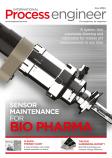Sven Eric Schmaljohann discusses an ex-protected gateway for advanced area monitoring.
Worker protection is a significant concern in industrial settings, especially when dealing with hazardous conditions and substances that are not immediately apparent. Take gas detection, for example, a job where it is essential to ensure everything is normal and in the green. When this is not the case, it can harm the environment and the person detecting an anomaly. Keeping a close eye on hazardous areas and the people working there is fundamental to occupational safety.
Real-time connectivity through networked safety solutions is proving to be life-saving. But there’s a challenge: where does worker protection end and continuous surveillance begin? Anyone discussing continuous monitoring faces the problem that unions and works councils are opposed to the real-time, personal observation of workers.
But still, wouldn’t it be great if you could always be aware of your employees’ whereabouts and safety without revealing their details? A question that has also been asked by the safety and medical technology provider Dräger.
Secure as well as safe
Having already launched its cloud-based Gas Detection Connect software, including asset management and live monitoring, Dräger presents its latest addition: the ConHub. Being a tool that can connect many devices with little effort, it tackles the issue of monitoring certain areas requiring increased attention without sharing workers’ data.
This ex-protected gateway is not designed to monitor individual workers but to provide deeper insight into high-risk work areas or zones. It is intended for use at accident sites, in areas with maintenance activities or other potential critical areas. The ConHub adds a crucial, employee-friendly dimension to traditional area monitoring: more profound insight into at-risk zones without monitoring individuals.
Easy-to-use device
The device can transmit alarms and readings of the Dräger X-zone 5x00 area monitors, X-am 2800/5800 multi-gas detectors and even with Bluetooth-equipped single gas detectors of the Pac series. Plus, users can connect up to 25 Bluetooth devices at once.
Best of all, employees need not worry about their security and are still protected. No tedious logging in and out, and no special training required. All they have to do is pick up the device and carry it around.
Safety managers receive an overview of how many units are in the vicinity at any time, and alarms can be relayed to all connected units. Any compatible mobile detector registered in a Gas Detection Connect asset management system will connect automatically without pairing. Once the user is in range of a ConHub, a connection is made, and live data is instantly visible in the cloud.
The same applies to data from the X-zone: All devices already in use can be connected to the gateway without configuration. Shortly afterwards, the X-zone also sends its data to the cloud.
Long-lasting and cost-efficient
The gateway can simultaneously transfer live measured gas values and alarms from up to 25 compatible devices within a radius of up to 100m (line of sight). Thus, the portable devices serve as personal air monitors and complement traditional area monitoring with their readings and alarms.
The device’s battery allows up to 60 hours of continuous operation; the runtime doubles using an optional second battery. A low basic fee aside, costs are calculated on a pay-per-use basis, so customers only pay when the devices are in active mode.
No-fuss protection
Providing higher security with the least possible effort, the solution offers fully automated operation by eliminating any required user interaction. Live data from all devices in the area is transmitted as soon as workers are within range.
The solution comes at low costs and its genius is in its simplicity. It requires no training for workers, who can fully concentrate on their tasks without having to think about additional safety issues.
The ConHub is specially designed for use in and better monitoring of hazardous areas, allowing users to gather deeper insights and detect dangers early on – a key to a reliable overview and another step towards a safer working environment.
Sven Eric Schmaljohann is with Dräger.


















